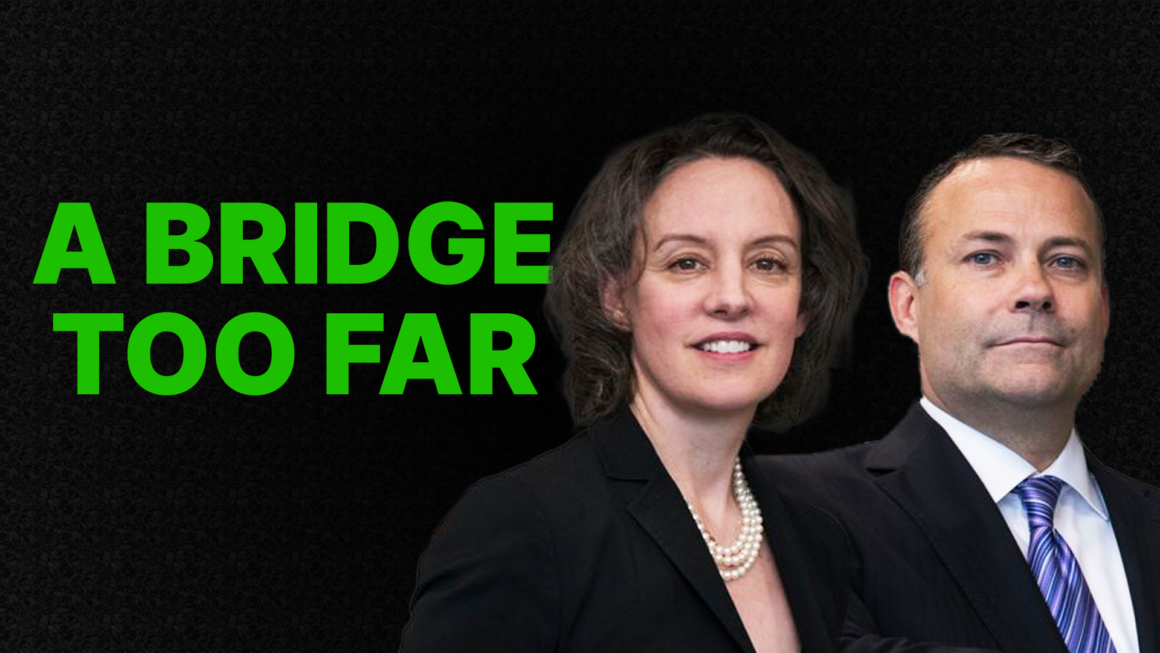Private debt has become increasingly popular among investors looking for higher yields than available on traditional fixed income investments, with private credit quadrupling in size over the past 10 years. It’s a market that now exceeds US $1 trillion worldwide, but one whose risks are often misunderstood.
“People often do not understand what private debt is and how risky it can be,” said Heather Mason-Wood, Chief Strategy and Operating Officer and portfolio manager at Canso Investment Counsel Ltd.
Private debt is simply a debt instrument that is negotiated directly between the borrower and the lender. The borrower may be a private company or a public company, but they are accessing an alternative source of financing either because of the nature of the loan or because they are too small to access traditional financing sources, such as bank financing or bond issuance.
Companies may use private debt to finance growth, expand their working capital, or fund real estate development. It’s a way for these companies to secure loans on terms not available from the big banks, and as bridge financing to more traditional bank loans. Customized lending terms mean a higher borrowing rate, which paves the way for those juicy yields everyone is after.
Risky business
Borrowers in the private space are rarely large public companies with ratings from the major credit rating agencies. As a result, lending decisions are largely predicated on a thorough review of financial statements and any other available information on the borrower. The lender is depending on the company to provide sufficient and accurate information in order to do their in-depth credit assessment on the financial condition of the borrower and its prospects for the future, including its ability to service the loan and repay it at maturity.
That means private lending requires extensive independent credit analysis and well-honed skills that come from actual credit experience. You cannot simply rely on ratings or the rating agencies.
In the case of loans to smaller companies, you may also have key man risk. In the event something were to happen to the company founder, the business could be at significant risk and possibly leave lenders unable to fully recoup their loans or do so on a timely basis.
“While private debt usually has a specific term, it seldom amortizes fully during that term, so there is a risk at maturity that the borrower is unable to secure another source of financing, should the original lender want to be repaid,” said Mason-Wood.
Additionally, if a borrower were to encounter financial difficulty during the term of the loan, the only way to collect on the debt is to enforce the security, by selling the pledged assets — but the proceeds might not be sufficient to repay the debt. This process can be very time consuming, costly and require a lot of effort.
The risk of default is higher with private debt than with traditional debt, which is why traditional sources of financing are not available. This is another component of the higher yields, since investors expect to be compensated for assuming greater risk.
Limited access
But no matter how appealing those higher yields may be, most individual investors weren’t able to access private debt markets until fairly recently. And they still can’t access private debt markets directly, unless they’re ultra-high net worth investors who have co-borrowing rights as part of their investment in a private debt fund. The most common way to invest in private credit is through a private debt investment fund, where investors buy units of a fund and the fund manager invests in private loans to businesses.
That places private credit under the umbrella of alternative investments — in fact, it’s currently the most common type of alternative investment. According to Moody’s Investors Service, alternative asset managers enjoyed a surge in assets under management (AUM) over the past decade, driven in large part by the growth of private credit – during a time when bonds paid very little while numerous central banks kept short-term interest rates at or near zero.
Fees in this space can be quite high, however, and the funds also come with a performance fee, which is usually at or near 20% of any returns above a stipulated benchmark rate or threshold.
Private debt is illiquid
While traditional fixed income tends to have a vast publicly traded secondary market, private debt issues are extremely illiquid because they cannot be readily traded during the borrowing term. As a result, private debt funds usually have more restrictive terms on redeeming units and at times of higher defaults may actually go into lockup, meaning nobody can redeem units.
This lack of liquidity means borrowers must pay a liquidity premium to lenders – another reason why private credit offers superior returns over conventional fixed income.
Deciding whether to invest
In addition to higher yields, it is believed that private debt has historically had a risk and return profile that is uncorrelated to the public markets and conventional fixed income assets. This means an allocation to private debt enables investors to further diversify their portfolios. However, given that private debt funds are a relatively recent phenomena in a period when fixed income itself was in a long-term bull market, it remains to be seen if private debt truly is uncorrelated with traditional fixed income.
With private debt funds, “the underlying loans are not marked to market as there is no broad market for the underlying holdings, so an investor usually won’t know if there is a change in the risk profile of the underlying assets until something goes wrong,” said Mason-Wood.
“Everything seems great until it isn’t. And it’s only when a default occurs that investors get a sense of the actual risk.”
And, unless the investor is an experienced direct lender like a commercial or corporate banker, it will be very difficult for them to properly assess the underlying investments within a fund.
Investors choosing to access this market must realize and accept that they are “heavily reliant on the manager of the fund to enact strict lending protocols and carry out rigorous ongoing monitoring of the underlying investments,” Mason-Wood said.
In terms of choosing which fund(s) to invest in, she added, the key consideration is whether the investment manager has a track record of private market lending, ideally through more than one market cycle, and with the same team. The skill set and experience of those managing the fund are key.
The integrity of those individuals is vitally important, as the Bridging Finance scandal clearly demonstrates.
Get adequate compensation for the risk you assume
The higher risk of lending in the private markets means there is a higher yield on these types of loans. But, an additional percent or two likely won’t cover the downside of a default workout, which is something investors should think about when stretching for yield. It’s important to consider whether the additional yield is adequate compensation for the risk assumed with that investment.
Additionally, in today’s rising yield environment, that additional 1% or 2% being paid now may not be that attractive versus a high-quality government bond issue a year or two from now.
Private debt typically offers a superior return opportunity, along with the potential for heightened portfolio diversification beyond traditional credit exposure. So, while an allocation to private debt can be beneficial, investors need to do their research and focus on the track record and expertise of any private credit manager.
Somehow, investors have come to believe that private investments are better. There is more cachet to something private and the offered yields are higher.
According to Mason-Wood, however, private debt issuers and fund managers should focus on more than just the higher yields in order to ensure “investors are aware of the true illiquidity they are accepting along with some serious potential for downside risk.”
Disclaimer: The views and information expressed in this publication are for informational purposes only. Information in this publication is not intended to constitute legal, tax, securities or investment advice and is made available on an “as is” basis. Information in this presentation is subject to change without notice and Canso Investment Counsel Ltd. does not assume any duty to update any information herein. Certain information in this publication has been derived or obtained from sources believed to be trustworthy and/or reliable. Canso Investment Counsel Ltd. does not assume responsibility for the accuracy, currency, reliability or correctness of any such information.






